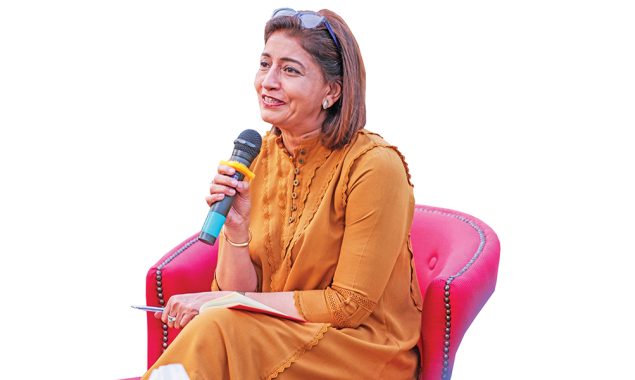Synopsis
Social scientist and academic Huma Baqai discusses the key governance issues affecting service delivery in this megacity

KARACHI: Huma Baqai is an Associate Professor of Social Sciences and Liberal Arts, and former associate dean, faculty of business administration at the Institute of Business Administration Karachi. Her teaching and research experience spans over a period of 25 years. She is the author of more than 29 national and international research articles published in renowned journals and also a co-editor of two books.
Here she discusses some of the core issues of Karachi with Bol News.
Karachi is popularly known as the biggest city with the biggest problems. Why does Karachi suffer despite being a megacity?
Karachi is the only true megalopolis in Pakistan. It is also a textbook case of urban challenges and political vicissitudes. This overly populated, poorly managed, ethnically diverse and politically volatile urban centre presents an interesting case.
Karachi can also be described as an ‘Urban Mess’. Paradoxically, it is Pakistan‘s richest and most educated city, but simultaneously the poorest, grossly unmanaged, and known for violence.
The city battles political, social, economic, psychological, and ecological problems. Over the years we’ve seen that it’s been impossible to align the city management. The centre-province tensions also exist here that further aggravates the problems of Karachi. The rural-urban divide is also unique; Karachi has the makings of a country and is not even a province.
Karachi’s growth is parallel to none; no other city in the world, at any time in history, has ever experienced such an enormous growth rate. The city has experienced a population growth rate of 432 per cent; from a city of 450,000 in 1947 it has turned into a demographic pressure cooker of 22 million inhabitants today.
It is already bursting at the seams, but with the influx of more and more people it’s becoming impossible to manage. The more people there are, the more consumers of electricity, gas, and water will be; more vehicles on the roads and more food and housing to cater to the needs of the inhabitants. To simplify, there is a demand-supply conundrum at play here with demands increasing every second with no supply mechanisms in place.
What real impact do Karachi’s stakeholders such as NGOs and urban planners have on the communities they work with? Are they working in the right direction?
Absolutely yes. In Karachi, NGOs and other stakeholders have played a critical role of acting as service providers, pressure groups, and as awareness-raising entities so that the government prioritizes pressing issues. The NGOs are involved in a number of welfare drives including literacy, healthcare, women empowerment, food [provision] activities etc. However, the NGOs cannot replace the state. The state is conspicuous by its absence in Karachi.
Moreover, the NGOs depend upon the donors that also include government agencies, and so they have to follow their set of rules and regulations. Largely the allocation of funds to the NGOs is at the discretion of the social welfare officers or private donors. Non-profit organisations such as the Edhi Foundation, Chhipa Welfare Association, Saylani Welfare Trust, and The Citizens Foundation (TCF) are doing a lot for the welfare of the people. I don’t know who would pick up the dead and rush people to the hospitals in this megacity if not for these organisations.
One third of Karachi is extremely poor and it may be categorised as one of the biggest slums in the world. Urban planners such as Muhammad Toheed have highlighted how a large percentage of the population of Karachi has been living in informal settlements. He has gone on to point out that policymakers and bureaucrats consider these settlements illegal and don’t include them in the development schemes; consequently, people living in these settlements are not even counted. However, they live in the city and use all its facilities.
Is the work of non-government actors sufficient? What are they lacking in their efforts?
Public-private partnership is always a great way of addressing issues, especially where the public initiative is resource-starved. These stakeholders can do much more in providing an effective system of evaluation and monitoring of welfare programmes in collaboration with the government. Increasing the participation of the NGOs in government-sponsored programmes is the need of the hour. The government should create a legal and institutional framework to provide a leadership role in community development with the assistance of NGOs. The non-government actors also have serious issues that hinder their functioning; they need to adopt a transparent working system, consultative problem-solving and non-discriminatory practices. By setting up mechanisms for transparent flow of information such as annual reports, these organisations can attract more community engagement and build trust.
We also know that these non-profit organisations lack proper funding. Fighting for justice and equality, alleviating poverty and preserving cultural integrity are expensive tasks and need sufficient funds to be managed properly. They need to strive towards being self-sufficient while remaining open to assistance from various partners including the government.
Can the people of Karachi also be held responsible for the city’s problems?
The people of Karachi have suffered tremendously and perhaps now they disown the city because the city disowns them. However, it is because of the resilience of these people Karachi continues to provide for the entire country. Despite all these issues it is the engine of growth. It still provides livelihood to all those who choose to migrate to Karachi.
Karachi is a resilient city, its descent into chaos started with unrestrained migration, religiosity, breakdown of law and order and, last but not the least, complete lack of response and understanding of the deteriorating situation by successive governments. In spite of all this, the city has functioned and delivered.
Karachi contributes approximately 60pc to Pakistan’s economy and according to the Sindh government, generates about 15pc of the national GDP, and 42pc of the value added in large-scale manufacturing. No one is willing to ‘own’ this city, but everybody is looking for their ‘share’.
Are we behind other countries in terms of the local entertainment industry in Karachi? Is this issue affecting Karachi’s tourism?
I know that we’re no match [for] the buzzing international entertainment industry, but we are on a steady path towards building our own national and local entertainment industries. Karachi has produced some of the highest grossing films and dramas. But yes, there is a lot of room for improvement. There is a need to promote culture. By making Karachi a hub of cultural activities with help from institutions like the Arts Council and NAPA new opportunities will open up for the people.
Experts and stakeholders linked to the tourism industry believe that Karachi’s unique landscape lends it a great capacity for tourism. However, it is the lack of a viable tourism policy that has kept the industry from contributing to the growth of gross domestic product.
We have a lot to learn from other megacities that have done so well. What should Karachi have already achieved by 2022?
Karachi is a megacity for all the wrong reasons. The infrastructure to support a city of this magnitude was never put in place. Karachi is an urban nightmare be it housing, transport, utilities, sewage, and solid waste management — nothing supports the massive population. Even today a vast majority of the people live in illegal, informal, and unplanned settlements also known as katchi abadis. Approximately 40pc of the residents rely on public transport, but with limited transportation facilities, travel within the city is difficult. The Green Line bus initiative is a step in the right direction but is also a drop in the ocean.
If we want to keep up with global cities, what tasks and challenges lie ahead for the cosmopolitan city?
Some of the most serious problems that need to be tackled are bad governance, overpopulation, pollution, poor urban planning and the absence of an adequate garbage and waste disposal system. The provincial government must strengthen the authorities concerned to address these issues. The government must also launch public awareness campaigns on these challenges.
To sum it up, there are serious governance issues. The people of Karachi have suffered a lot over the years and there seems to be no way out of these problems. Abandoning Karachi and continuing the way things are right now is not an option. Karachi is dying bit by bit. The nation’s former capital [sees] at least 200,000 people sleeping on the streets and more than a million living in hovels made of burlap bags and mud. To the government as well as to local planners Karachi is a source of embarrassment.
Your comments on the centre-Sindh disagreements? Are there any agreements at all between the federal and provincial governments?
Karachi has long been a sour point of federal-provincial politics. The underlying political conflict has had a far-reaching impact on the polity of Sindh which continues to shape the conflict matrix of Karachi, especially political militancy, ethnicity and sectarian-driven conflict, discord over the local government law, politicised police force, tussle over political offices, politicisation of educational institutions and quota system.
More recently, the tussle over the loot from the city where utility services to the citizenry have completely gone out of control of the provincial government; the land, water and extortion mafias of Karachi divided along political lines, the phenomenon of no-go areas are all trajectories of this.
Karachi, despite generating 60pc of the federal revenue, hardly gets 15pc of the federal resources. The joint efforts of federal and provincial governments can take Karachi out of crime, power shortages, and unemployment.
What laws need improvement/amendment to secure Karachi’s economic stability?
We need to try and determine the exact population of Karachi and only then can we go towards proper planning. Preparing a ‘master plan’ for the city will only help if we exactly know how many people need to be managed. Without this step it will be virtually impossible for any government to give due share for the city’s development.
Karachi needs the status of a metropolitan city with all its manifestations like all other megacities around the world. The local bodies system needs to be empowered; the elected mayor should be able to work for the whole city and not merely 34pc.
Lastly, the city shouldn’t have multiple power structures. We are witness to how multiplicity of control centres has led to confusion. We need to impose a restructuring emergency in Karachi.
What can the common people do practically (through political action, or personal action) to improve their locality/neighbourhoods?
Informed voting by the youth and women can change the fate of this city. All else will come later. Please don’t get politically exploited any further.
Read More News On
Catch all the Pakistan News, Breaking News Event and Latest News Updates on The BOL News
Download The BOL News App to get the Daily News Update & Follow us on Google News.




